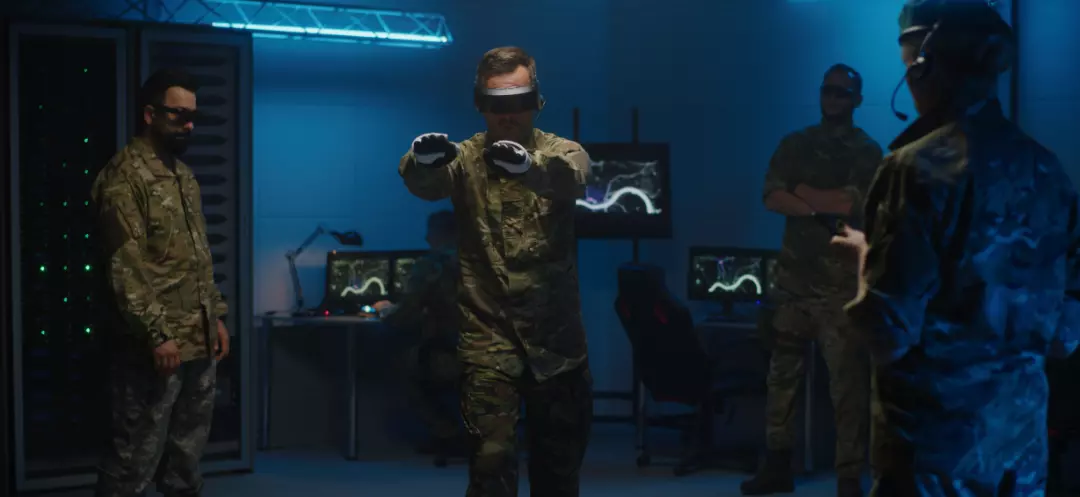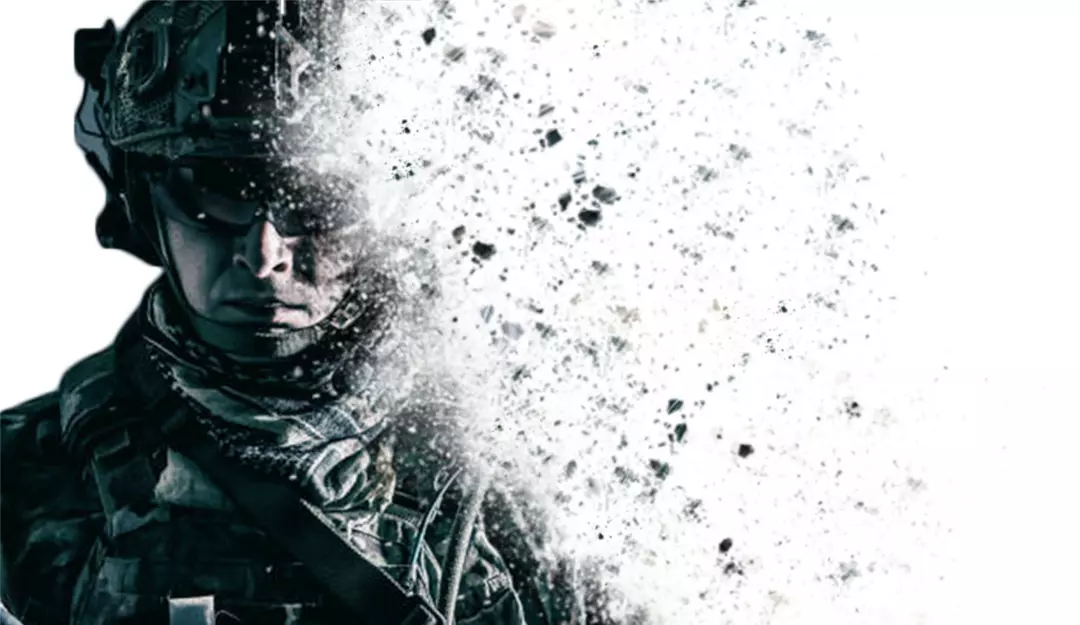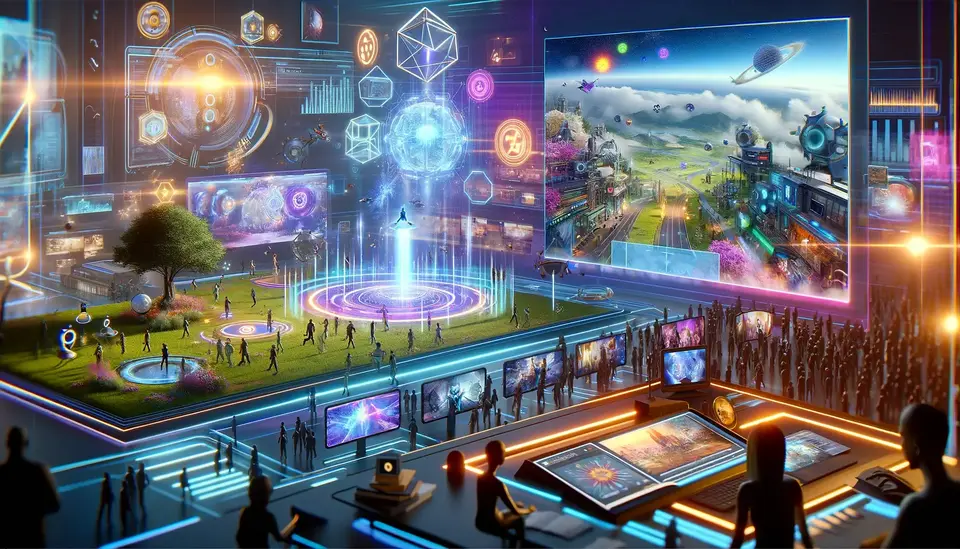15 Examples of the Use of Metaverse in Military
Posted on March 29, 2023 5 minutes 899 words
Table of contents
- 1. Virtual Training Simulations
- 2. Remote Weapon Systems Control
- 3. Real-time Battlefield Data Visualization
- 4. VR-Enhanced Medical Training
- 5. Cyber Warfare Exercises
- 6. Joint Military Operations Training
- 7. Virtual Equipment Maintenance Training
- 8. Language and Cultural Training
- 9. Disaster Response Scenarios
- 10. War Game Simulations
- 11. Psychological Resilience Training
- 12. Reconnaissance and Surveillance
- 13. Recruitment and Onboarding
- 14. Remote Collaboration and Planning
- 15. Public Relations and Outreach
- Conclusion
The metaverse is rapidly transforming various industries, offering unparalleled opportunities for innovation and growth. One sector that has been significantly impacted by the metaverse is the military, which has embraced this cutting-edge technology to enhance training, strategic planning, and overall effectiveness. In this blog post, we will delve into 15 real-world examples of how the metaverse is revolutionizing military operations.
1. Virtual Training Simulations
The metaverse has provided a platform for realistic and immersive training simulations, allowing soldiers to practice combat scenarios in safe, controlled environments. For example, the US Army has developed the Synthetic Training Environment (STE), which combines virtual reality (VR), augmented reality (AR), and artificial intelligence (AI) to create a comprehensive training platform.

2. Remote Weapon Systems Control
The metaverse enables soldiers to remotely control unmanned weapon systems, reducing human risk during dangerous missions. One example is the MQ-9 Reaper, an unmanned aerial vehicle (UAV) used by the US Air Force for reconnaissance and strike missions, which can be operated remotely through the metaverse.
3. Real-time Battlefield Data Visualization
By integrating the metaverse with advanced sensors and data analytics, military commanders can access real-time, 3D visualizations of battlefield data. The US Defense Advanced Research Projects Agency (DARPA) is researching the creation of a “Persistent Stare Exploitation and Analysis System” (PSEAS) that will utilize the metaverse for this purpose.
4. VR-Enhanced Medical Training
Medical personnel can use the metaverse for immersive trauma training, improving their skills and response times. The US Army’s Medical Simulation Training Center (MSTC) employs VR technology to simulate realistic battlefield injuries, allowing medics to practice life-saving techniques.
5. Cyber Warfare Exercises
The metaverse facilitates the simulation of cyber warfare scenarios, helping military personnel defend against cyber threats. For example, the US Cyber Command conducts regular cyber exercises called “Cyber Flag,” where participants utilize the metaverse to practice responding to cyberattacks.
6. Joint Military Operations Training
The metaverse promotes collaboration between various military branches, fostering joint training exercises and interoperability. The Joint Multinational Readiness Center (JMRC) in Germany utilizes the metaverse to facilitate training exercises for NATO forces, enabling soldiers from different countries to practice joint operations.
7. Virtual Equipment Maintenance Training
Interactive, virtual lessons in the metaverse allow soldiers to learn equipment maintenance and repair. The US Navy, for instance, has developed the Virtual Maintenance Performance Aid (VMPA), which employs AR technology to guide sailors through the maintenance of various ship systems.
8. Language and Cultural Training
The metaverse offers immersive experiences for military personnel to learn foreign languages and understand cultural nuances. The US Department of Defense (DoD) developed the Tactical Language and Culture Training System (TLCTS), a metaverse-based program that teaches language skills and cultural awareness to soldiers.
9. Disaster Response Scenarios
The metaverse allows military personnel to train for disaster response scenarios, such as search and rescue missions or earthquake relief efforts. For example, the National Guard utilizes the Virtual Incident Command System (VICS) to simulate natural disaster scenarios, improving their ability to respond effectively in real-world situations.
10. War Game Simulations
The metaverse facilitates realistic war game simulations, helping military strategists develop and test various strategies and tactics. The US Naval War College, for example, has adopted a metaverse-based war game called the “Massive Multiplayer Online War Game Leveraging the Internet” (MMOWGLI), which allows participants to collaborate and test new strategies in a virtual environment.
11. Psychological Resilience Training
Using the metaverse, soldiers can build mental resilience by experiencing simulated stressful situations. Programs like the US Army’s STRONG (Stress Resilience On-demand in a Virtual Environment) project help soldiers develop coping mechanisms for high-pressure environments.
12. Reconnaissance and Surveillance
The metaverse enables analysts to review and explore satellite and drone imagery in an immersive 3D environment, improving reconnaissance capabilities. The US National Geospatial-Intelligence Agency (NGA) is working on a project called the “Immersive Intelligence System,” which utilizes the metaverse to provide analysts with an interactive 3D interface for exploring geospatial data and enhancing surveillance capabilities.
13. Recruitment and Onboarding
The metaverse can create immersive virtual tours and experiences for potential recruits, showcasing military life and streamlining onboarding processes. The British Army, for instance, has developed a VR recruitment campaign called “This Is Belonging,” which provides potential recruits with a glimpse into army life through a series of immersive VR experiences.
14. Remote Collaboration and Planning
Military personnel can collaborate remotely in virtual meeting spaces, simplifying planning and coordination efforts. The US Air Force’s Air Combat Command (ACC) is utilizing the metaverse in a project called “Virtual Air Operations Center” (vAOC), which allows personnel to coordinate air operations in a virtual environment.
15. Public Relations and Outreach
The metaverse can bridge the gap between the military and the public by providing virtual experiences that showcase military capabilities, humanitarian efforts, and more. The US Navy, for example, has developed a VR app called “Navy VR,” which allows users to experience naval operations, aircraft carriers, and various other aspects of naval life.
Conclusion
The metaverse is revolutionizing the military landscape, offering innovative solutions for training, strategic planning, and more. By leveraging the power of the metaverse, military forces worldwide can improve their readiness and effectiveness, ultimately contributing to a safer and more secure future. As the metaverse continues to evolve, it will be fascinating to see how its applications in the military sector expand and transform to further enhance capabilities and outcomes.








